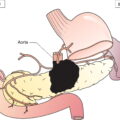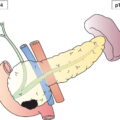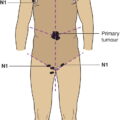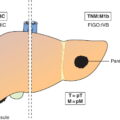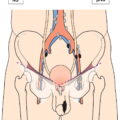The classification applies only to carcinomas. There should be histological confirmation of the disease. Note The lingual (anterior) surface of the epiglottis (C10.1) is included with the larynx, suprahyoid epiglottis (see pages 35–36). Note The margin of the choanal orifices, including the posterior margin of the nasal septum, is included with the nasal fossa. The regional lymph nodes are the cervical nodes. The supraclavicular fossa (relevant to classifying nasopharyngeal carcinoma) is the triangular region defined by three points: p16 negative cancers of the oropharynx, or oropharyngeal cancers without a p16 immunohistochemistry performed Note * Mucosal extension to lingual surface of epiglottis from primary tumours of the base of the tongue and vallecula does not constitute invasion of the larynx. Tumours that have positive p16 immunohistochemistry overexpression. Fig. 49 MRI of an HPV‐positive T4 tonsil lesion extending into the parapharyngeal space (arrow). Fig. 51 Differences in defining criteria between the previous 7th edition and the current 8th edition: changing the extent of soft tissue involvement as T2 and T4 criteria. CS indicates carotid space; LP, lateral pterygoid muscle; M, masseter muscle; MP, medial pterygoid muscle; PG, parotid gland; PPS, parapharyngeal space; PV, prevertebral muscle; T, temporalis muscle. Source: Modified from Pan JJ, Ng WT, Zong JF, et al. (2016) Proposal for the 8th edition of the AJCC/UICC staging system for nasopharyngeal cancer in the era of intensity‐modulated radiotherapy. Cancer 122(4):546–558. Note * Central compartment soft tissue includes prelaryngeal strap muscles and subcutaneous fat. See Head and Neck Tumours for p16‐negative oropharynx tumours and hypopharynx. Clinical Pathological Note Midline nodes are considered ipsilateral nodes. Fig. 76 Differences in defining criteria between the previous 7th edition and the current 8th edition: replacing the supraclavicular fossa (blue) with the lower neck (i.e., below the caudal border of cricoid cartilage; red) as N3 criteria. Source: Modified from Pan JJ, Ng WT, Zong JF, et al. (2016) Proposal for the 8th edition of the AJCC/UICC staging system for nasopharyngeal cancer in the era of intensity‐modulated radiotherapy. Cancer 122(4):546–558. The pT and pN categories correspond to the T and N categories.
PHARYNX (ICD‐O C01, C05.1, 2, C09, C10.0, 2, 3, C11–13)
Rules for Classification
Anatomical Sites and Subsites
Oropharynx (C01, C05.1, 2, C09.0, 1, 9, C10.0, 2, 3) (Figs. 41, 42)

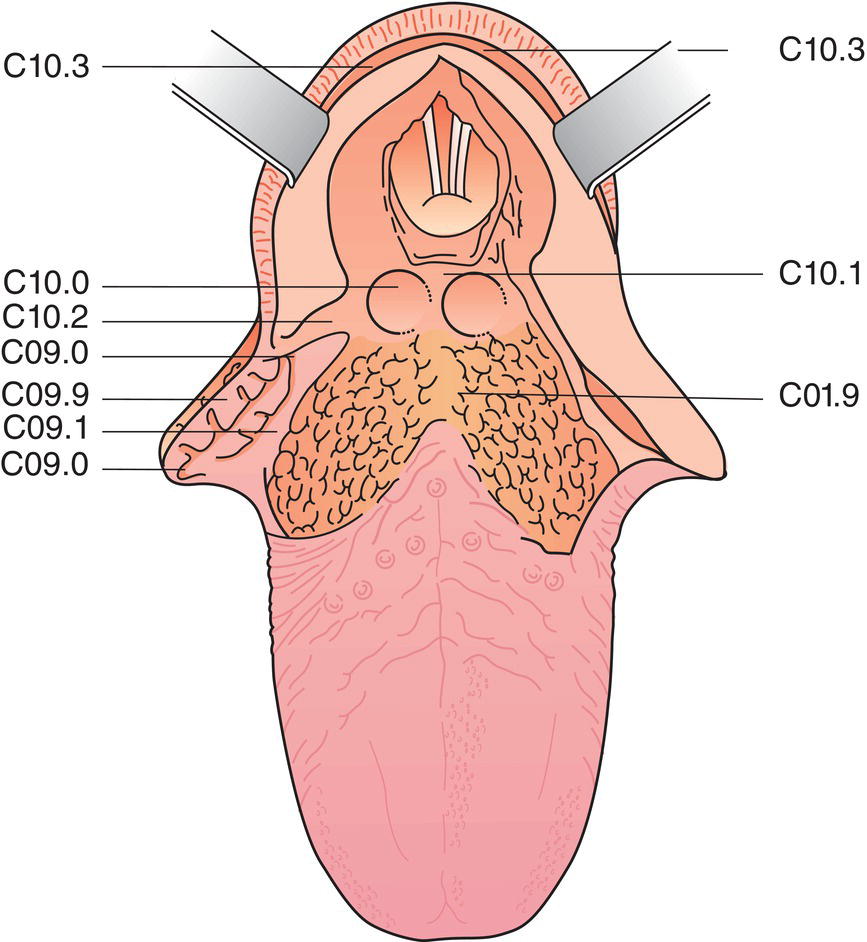
Nasopharynx (Fig. 43)
Hypopharynx (C12, C13) (Fig. 43)

Regional Lymph Nodes
TN Clinical Classification
T – Primary Tumour
TX
Primary tumour cannot be assessed
T0
No evidence of primary tumour
Tis
Carcinoma in situ
Oropharynx
T1
Tumour 2 cm or less in greatest dimension (Fig. 44)
T2
Tumour more than 2 cm but not more than 4 cm in greatest dimension (Fig. 45)
T3
Tumour more than 4 cm in greatest dimension or extension to lingual surface of epiglottis (Fig. 46)
T4a
Tumour invades any of the following: larynx, deep/extrinsic muscle of tongue (genioglossus, hyoglossus, palatoglossus and styloglossus), medial pterygoid, hard palate or mandible* (Fig. 47)
T4b
Tumour invades any of the following: lateral pterygoid muscle, pterygoid plates, lateral nasopharynx, skull base; or encases carotid artery (Fig. 48)
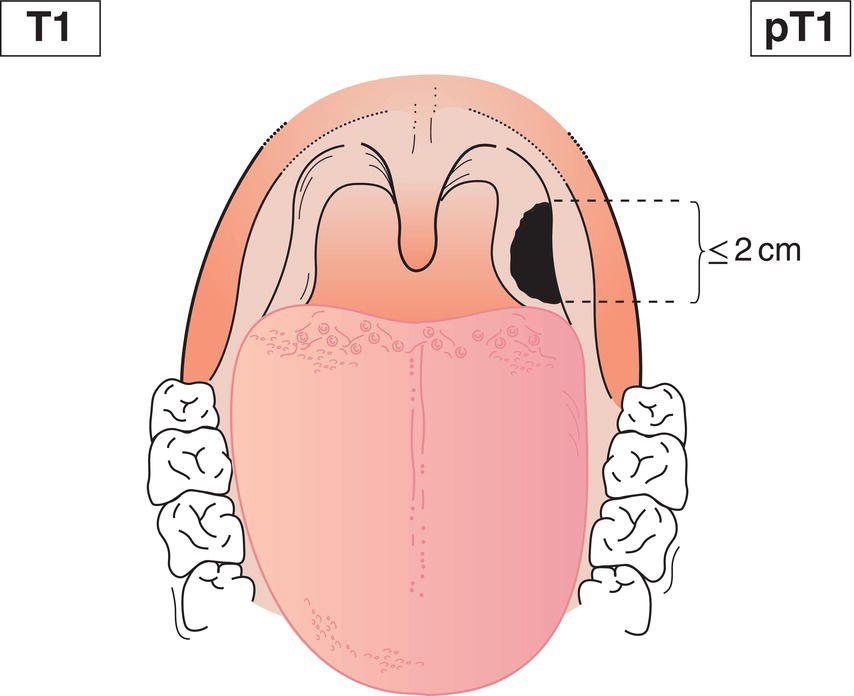
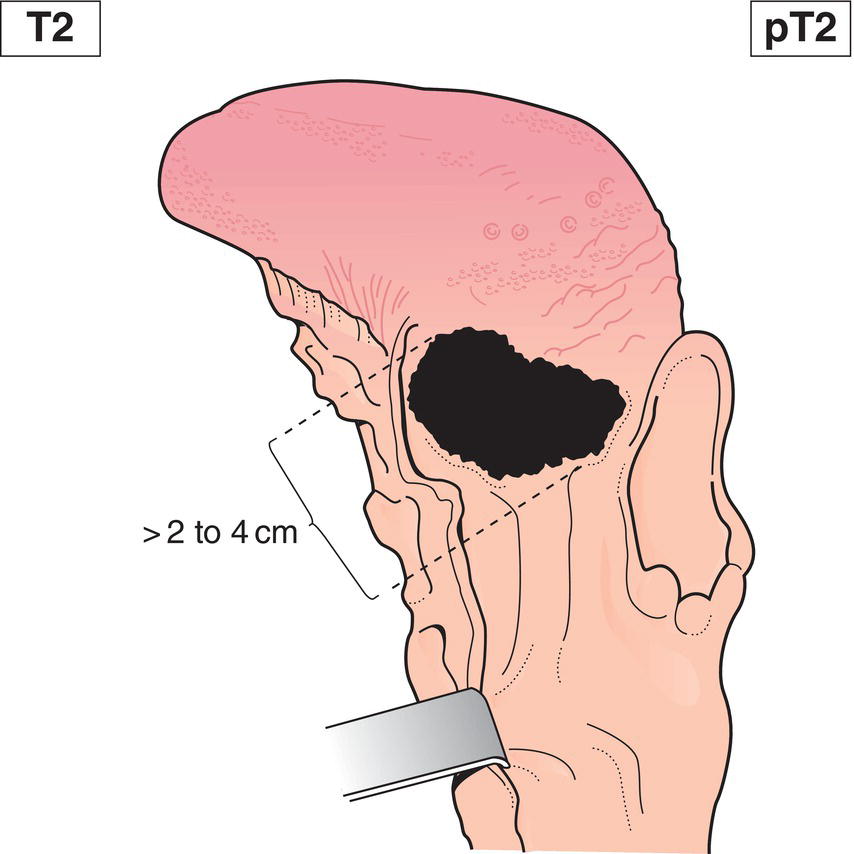
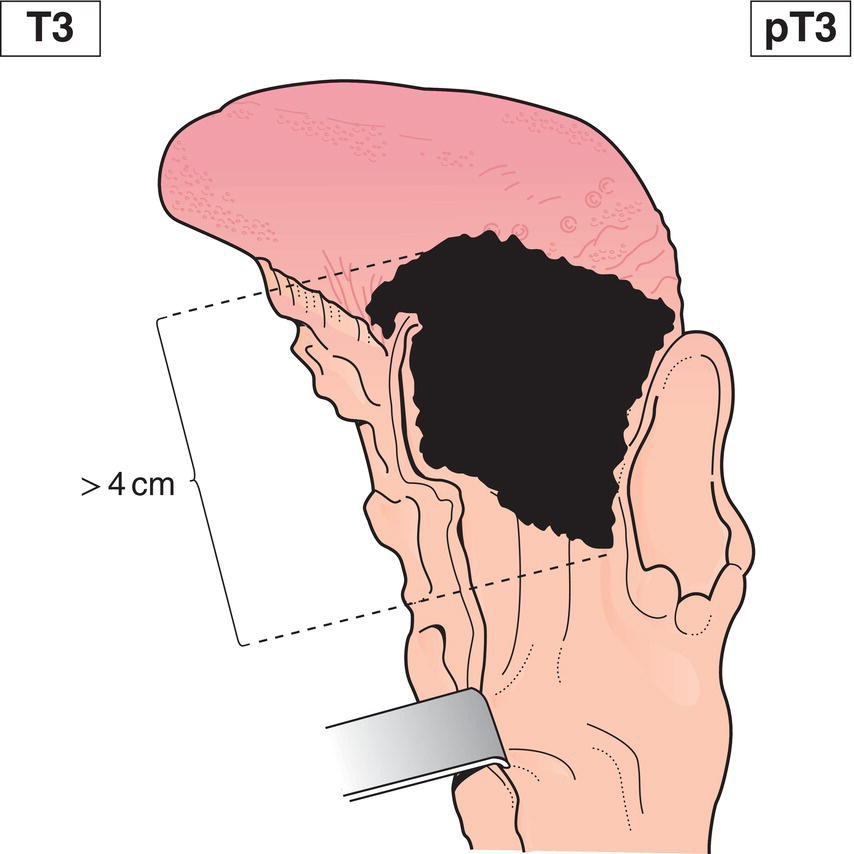
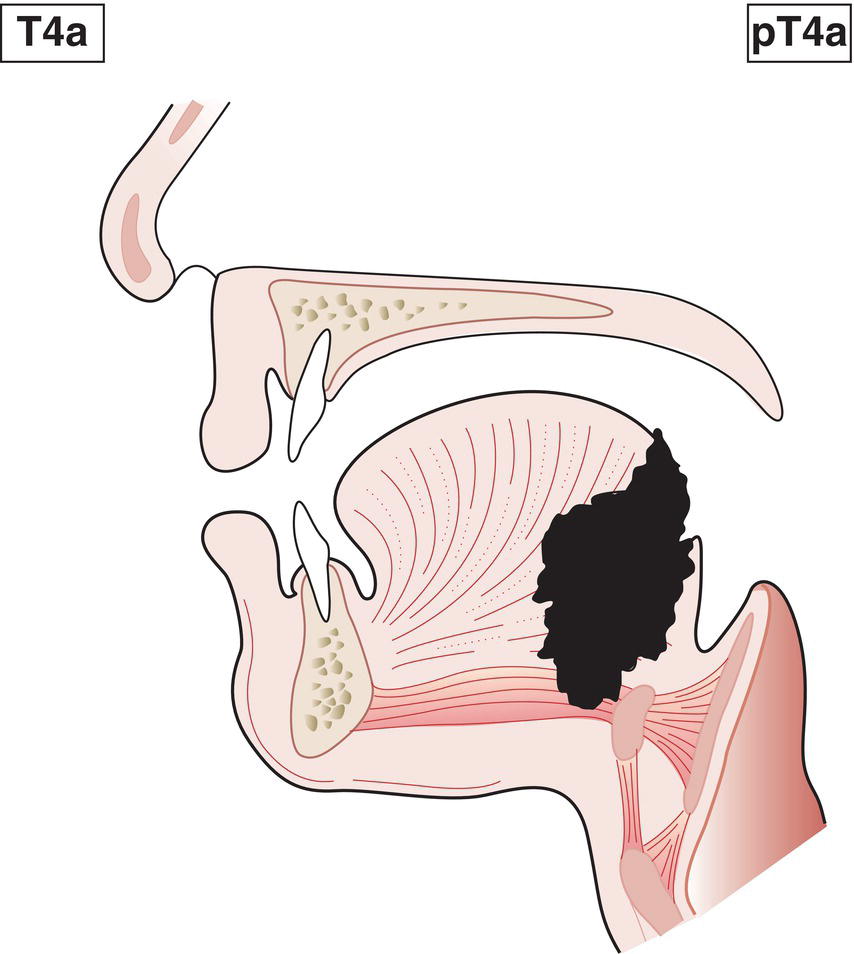
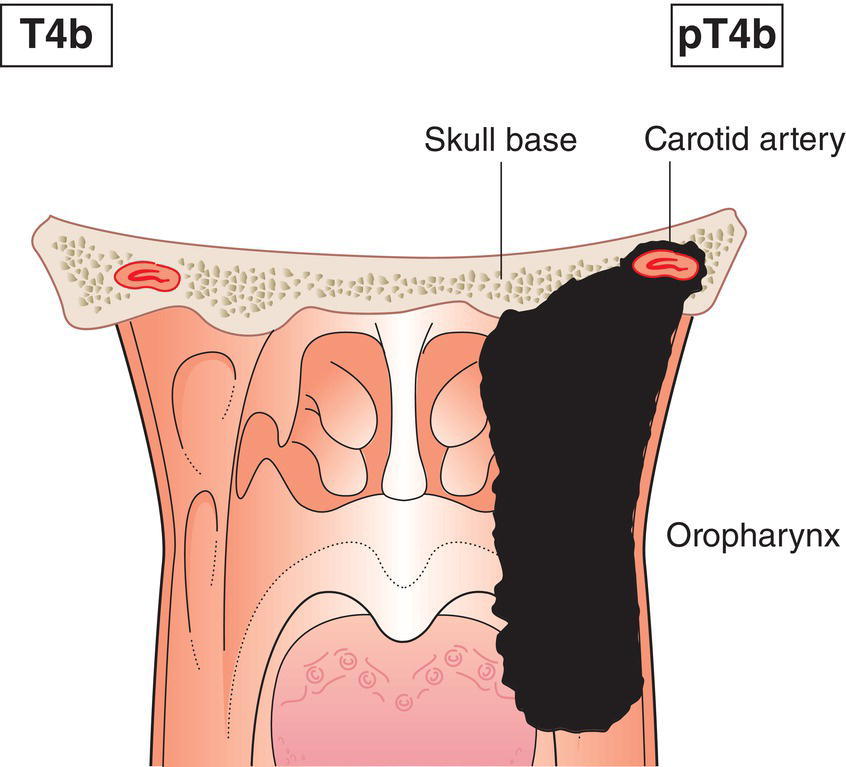
Oropharynx – p16‐Positive Tumours
T1
Tumour 2 cm or less in greatest dimension (Fig. 44)
T2
Tumour more than 2 cm but not more than 4 cm in greatest dimension (Fig. 45)
T3
Tumour more than 4 cm in greatest dimension or extension to lingual surface of epiglottis (Fig. 46)
T4
Tumour invades any of the following: larynx, deep/extrinsic muscle of tongue (genioglossus, hyoglossus, palatoglossus and styloglossus), medial pterygoid, hard palate, mandible*, lateral pterygoid muscle, pterygoid plates, lateral nasopharynx, skull base; or encases carotid artery (Figs. 47, 48, 49) 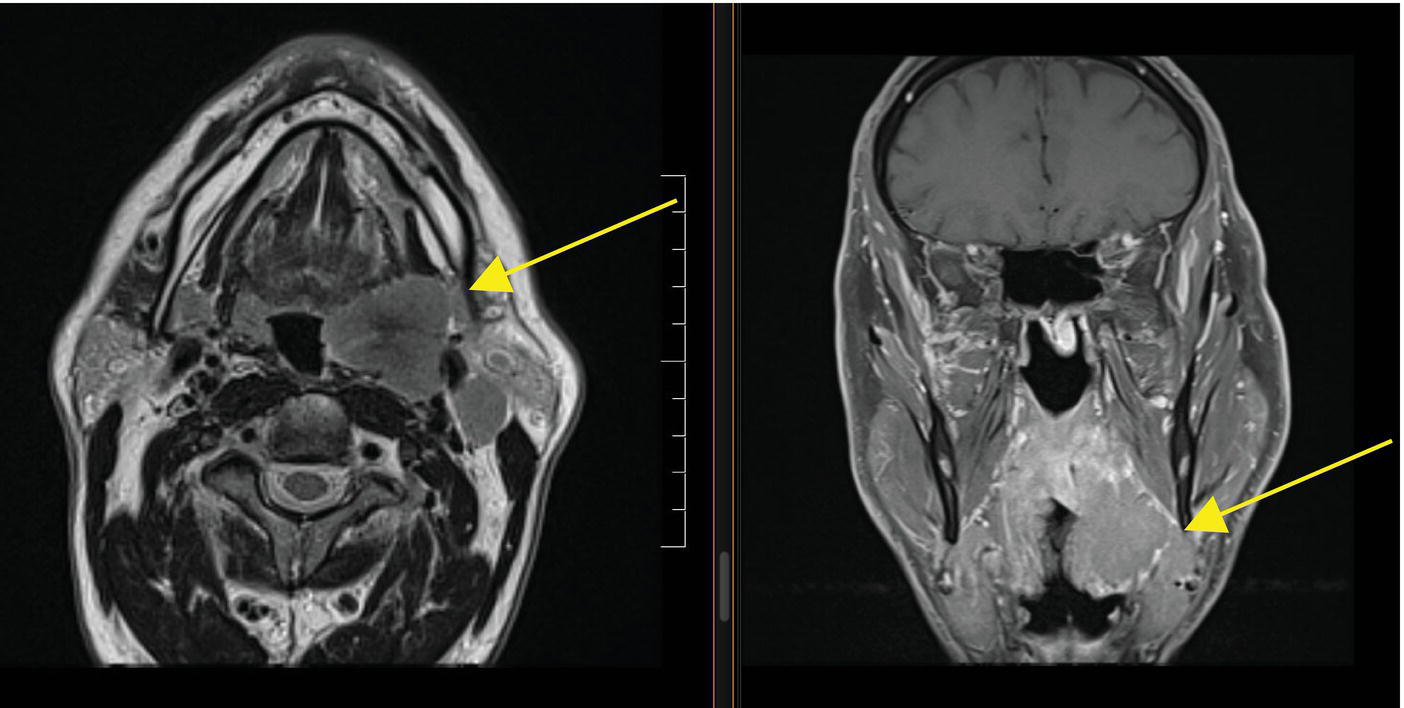
Nasopharynx
T1
Tumour confined to nasopharynx, or extends to oropharynx and/or nasal cavity (Fig. 50)
T2
Tumour with extension to parapharyngeal space and/or infiltration of the medial pterygoid, lateral pterygoid and/or prevertebral muscles (Figs. 51, 52)
T3
Tumour invades bony structures of skull base cervical vertebra, pterygoid structures and/or paranasal sinuses (Fig. 53)
T4
Tumour with intracranial extension and/or involvement of cranial nerves, hypopharynx, orbit, parotid gland and/or infiltration beyond the lateral surface of the lateral pterygoid muscle (Fig. 54) 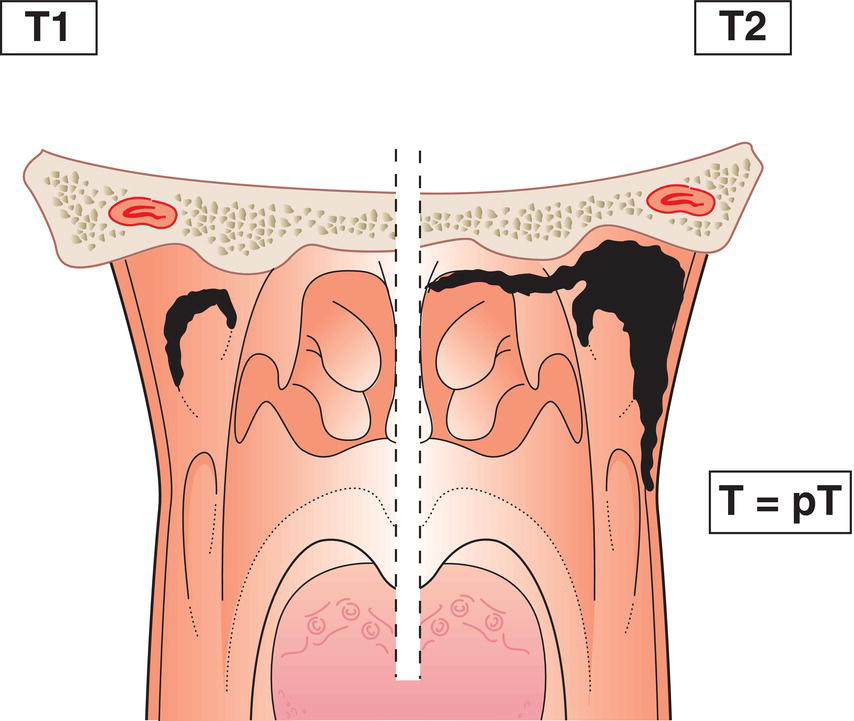

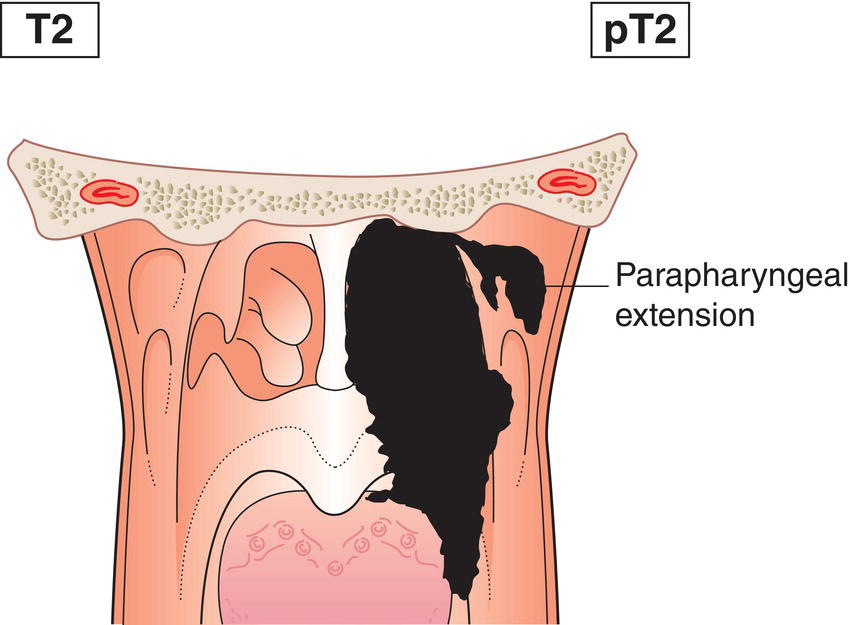
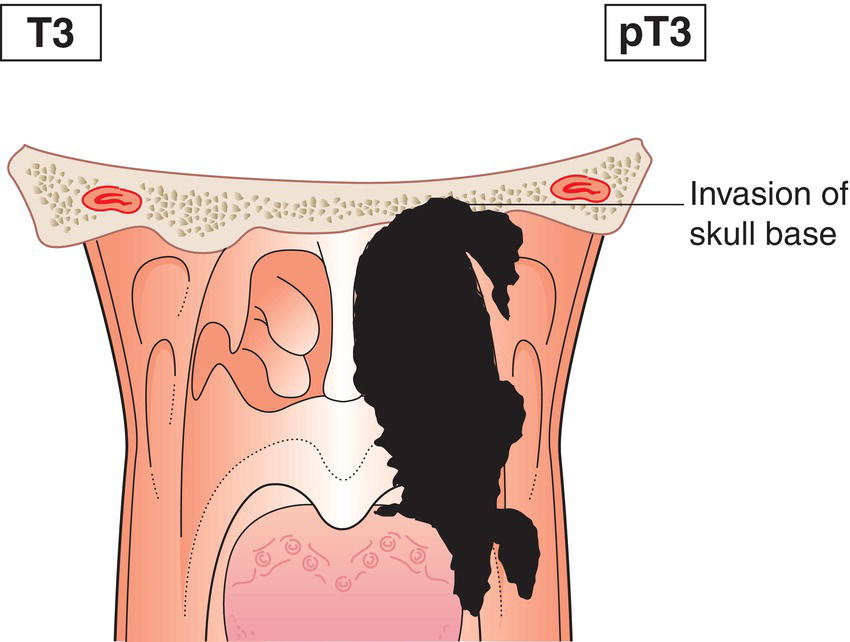
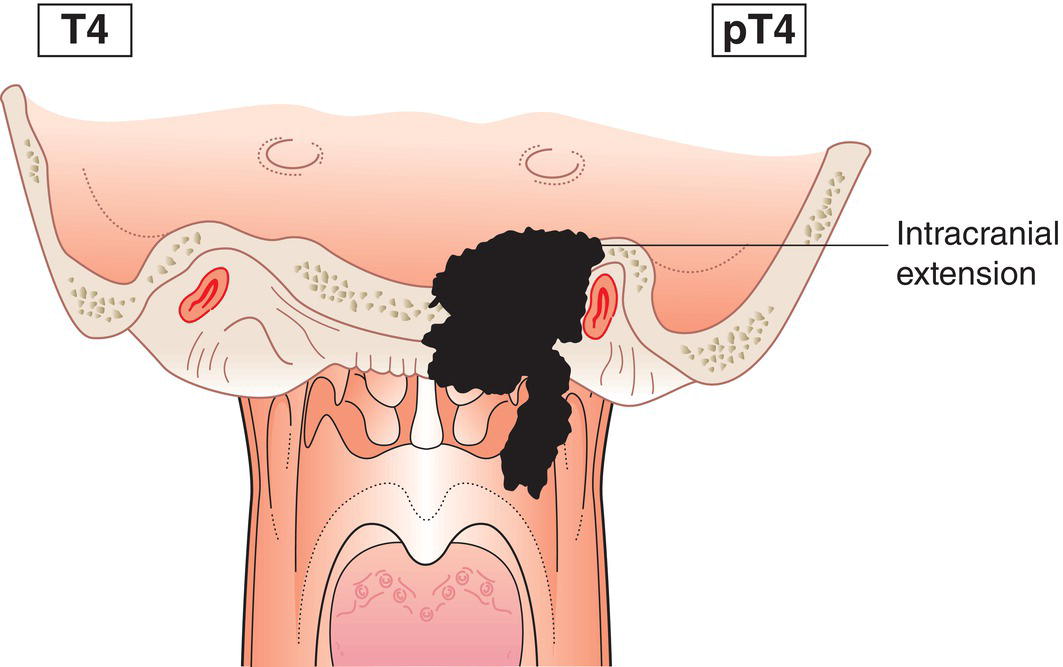
Hypopharynx
T1
Tumour limited to one subsite of hypopharynx (see Fig. 43) and/or 2 cm or less in greatest dimension (Figs. 55, 56, 57)
T2
Tumour invades more than one subsite of hypopharynx or an adjacent site, or measures more than 2 cm but not more than 4 cm in greatest dimension, without fixation of hemilarynx (Figs. 58, 59, 60, 61, 62)
T3
Tumour more than 4 cm in greatest dimension, or with fixation of hemilarynx or extension to oesophagus (Figs. 63, 64, 65)
T4a
Tumour invades any of the following: thyroid/cricoid cartilage, hyoid bone, thyroid gland, oesophagus, central compartment soft tissue* (Figs. 66, 67)
T4b
Tumour invades prevertebral fascia (Fig. 68), encases carotid artery or invades mediastinal structures
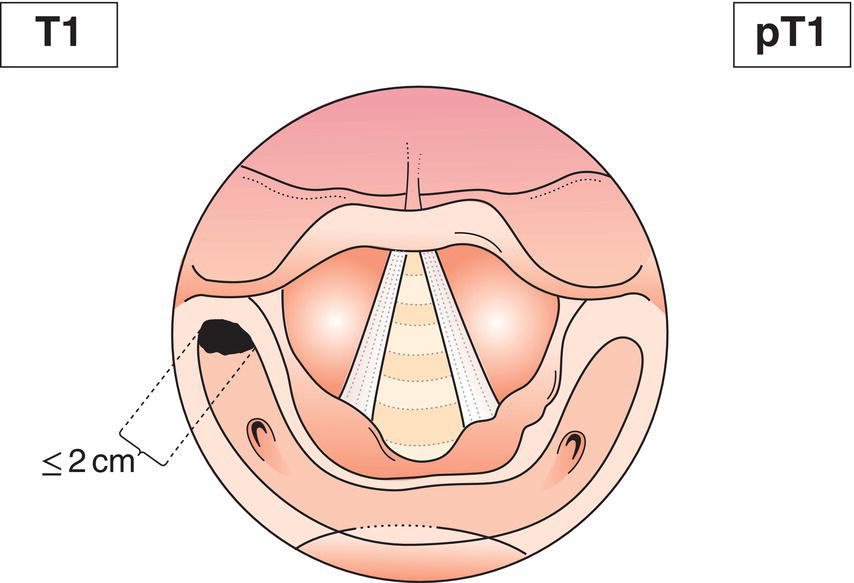
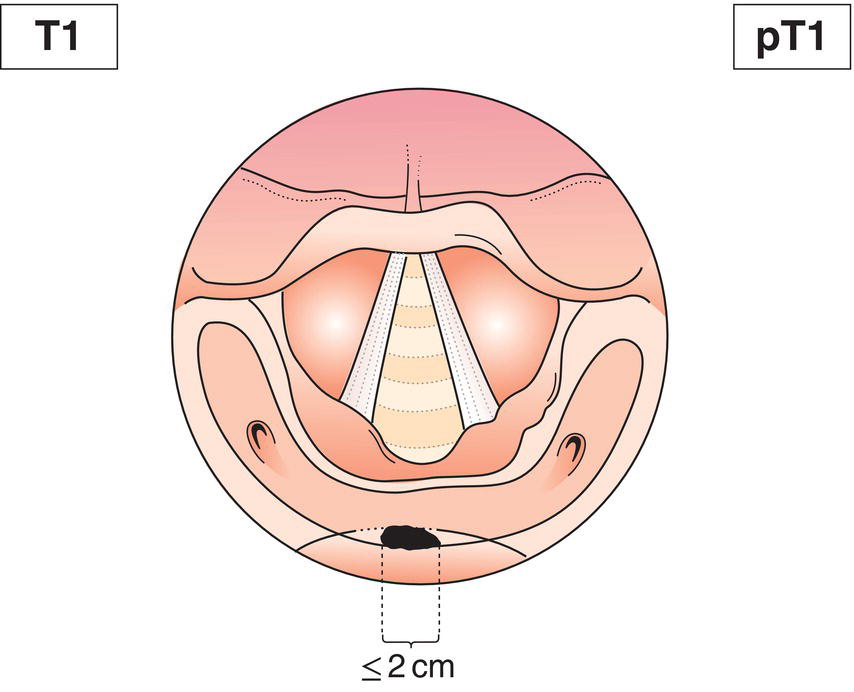
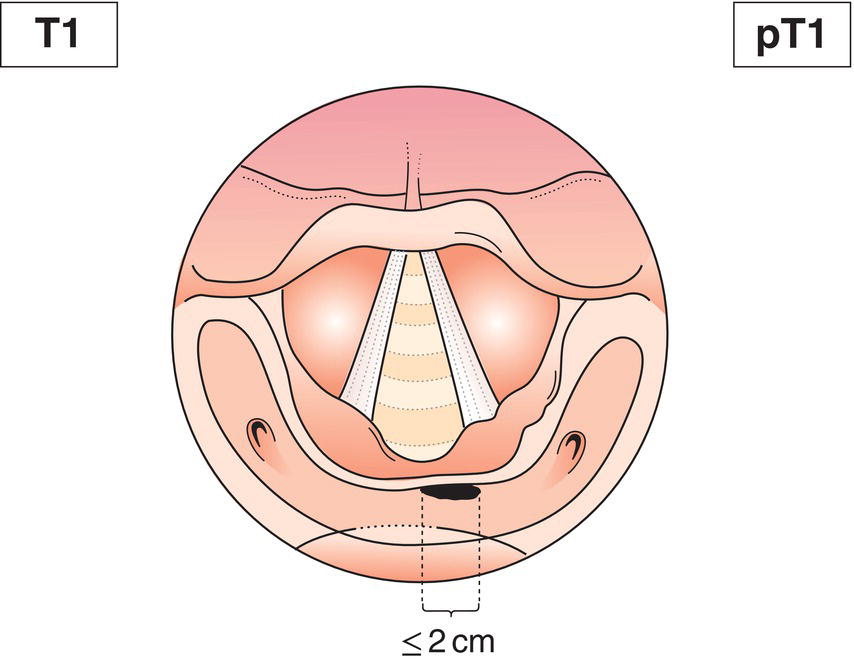
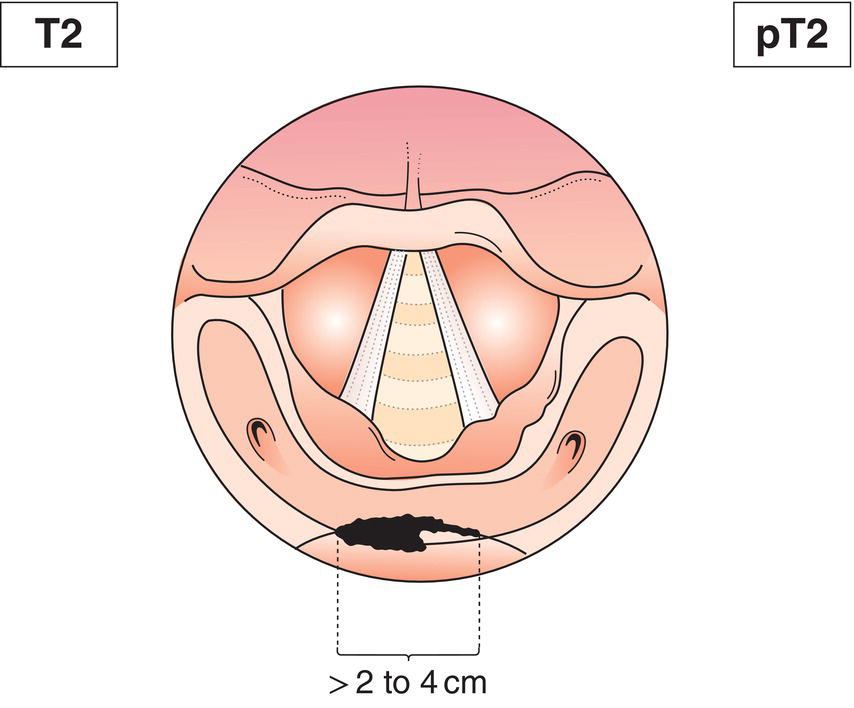
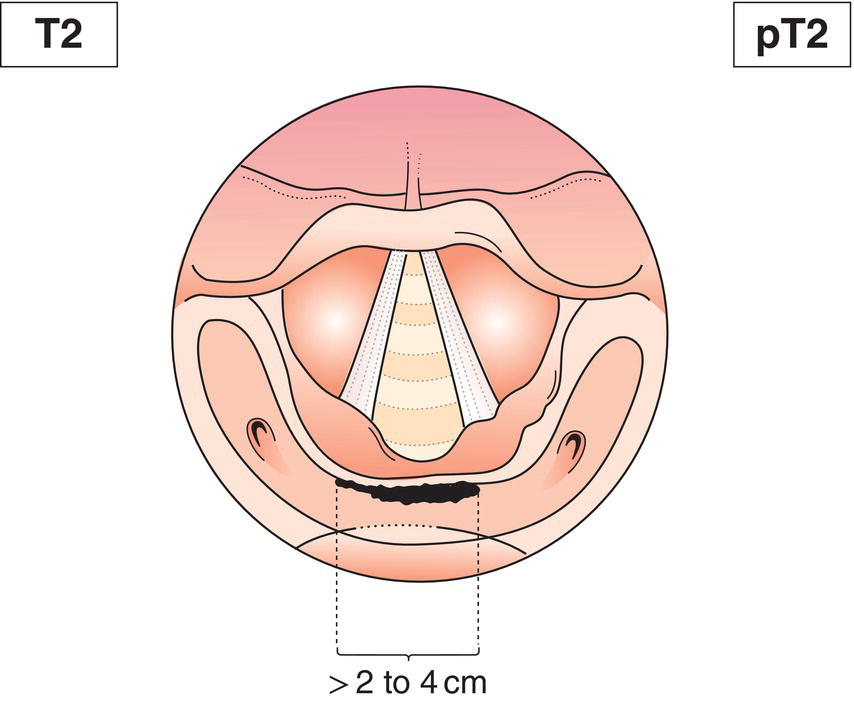
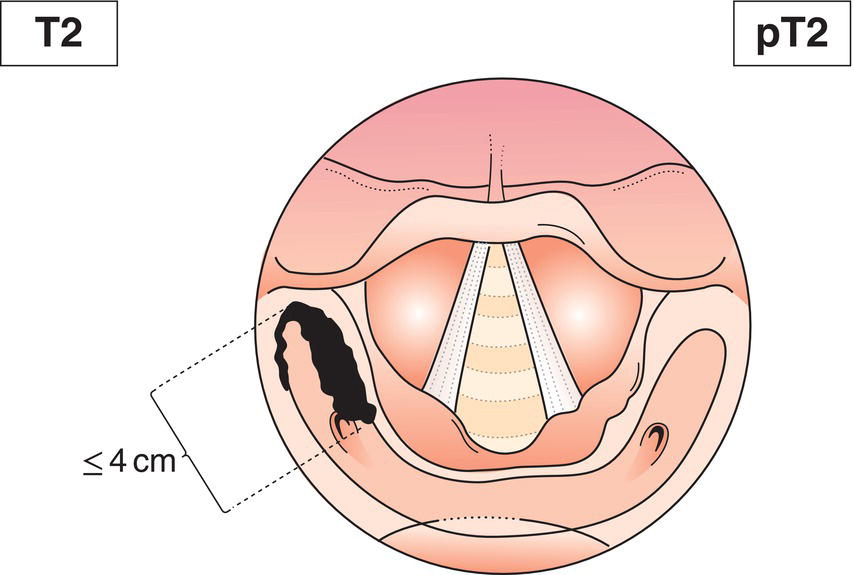
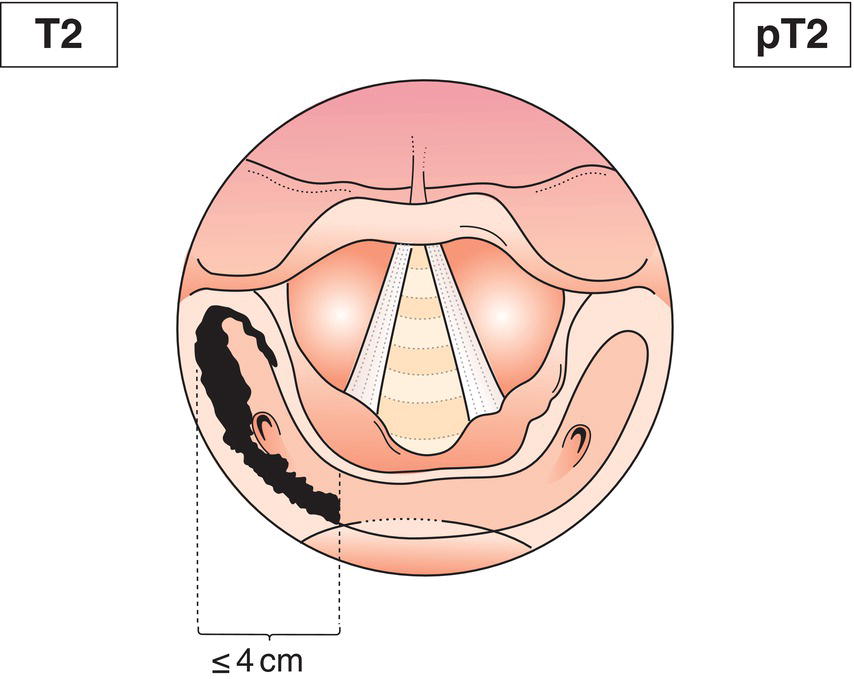
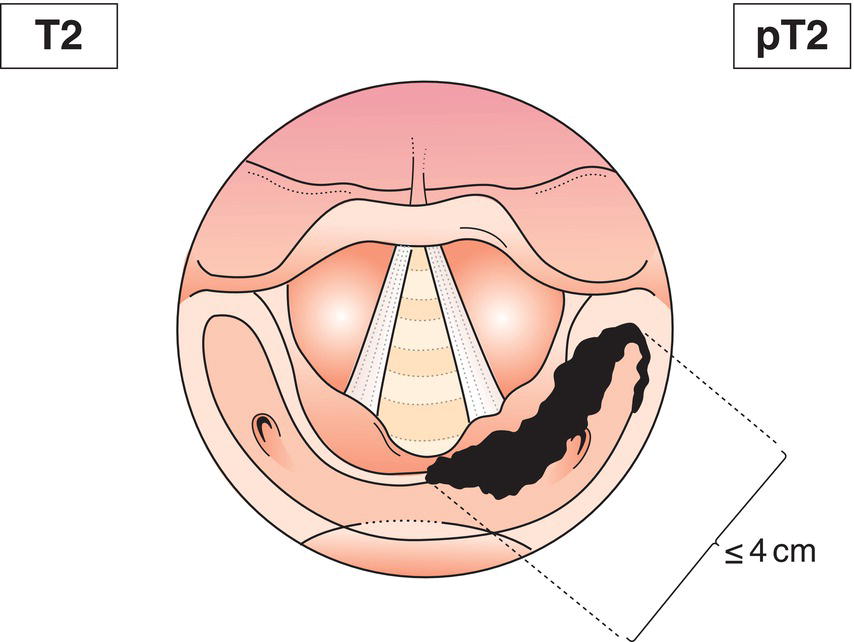
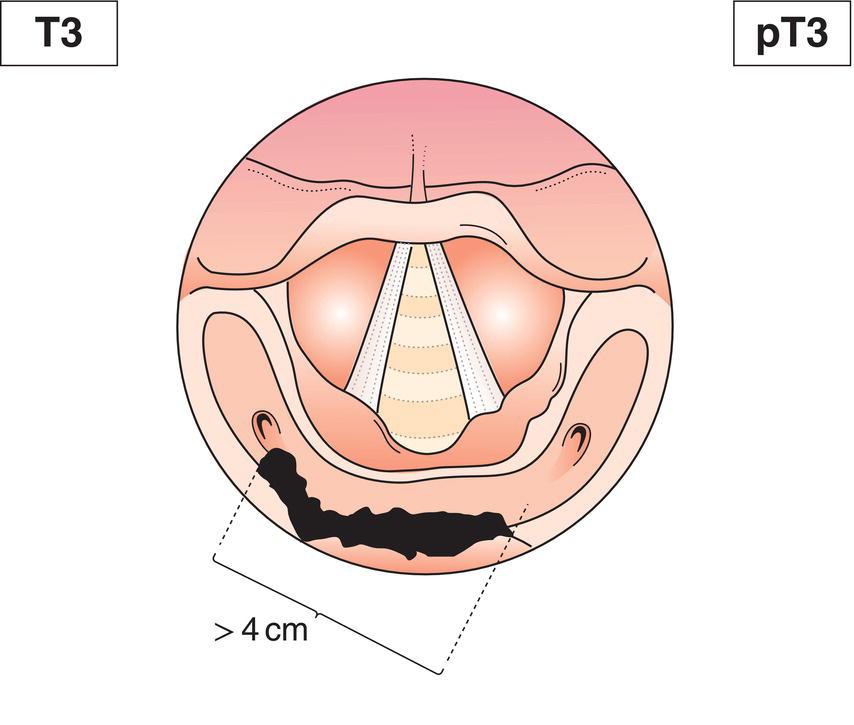
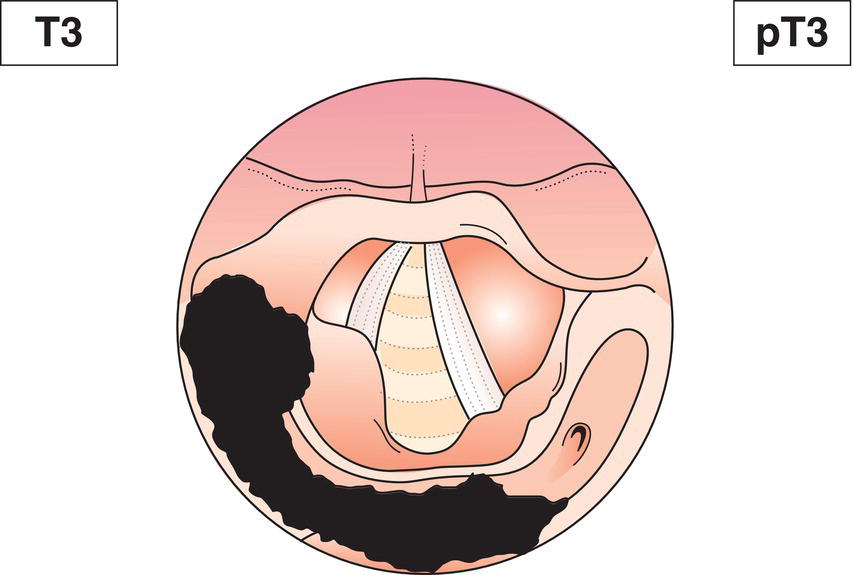
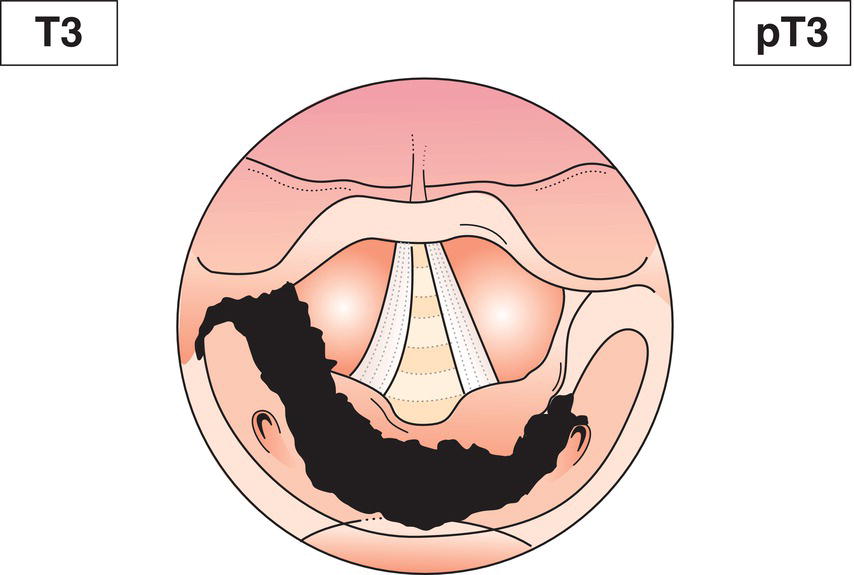
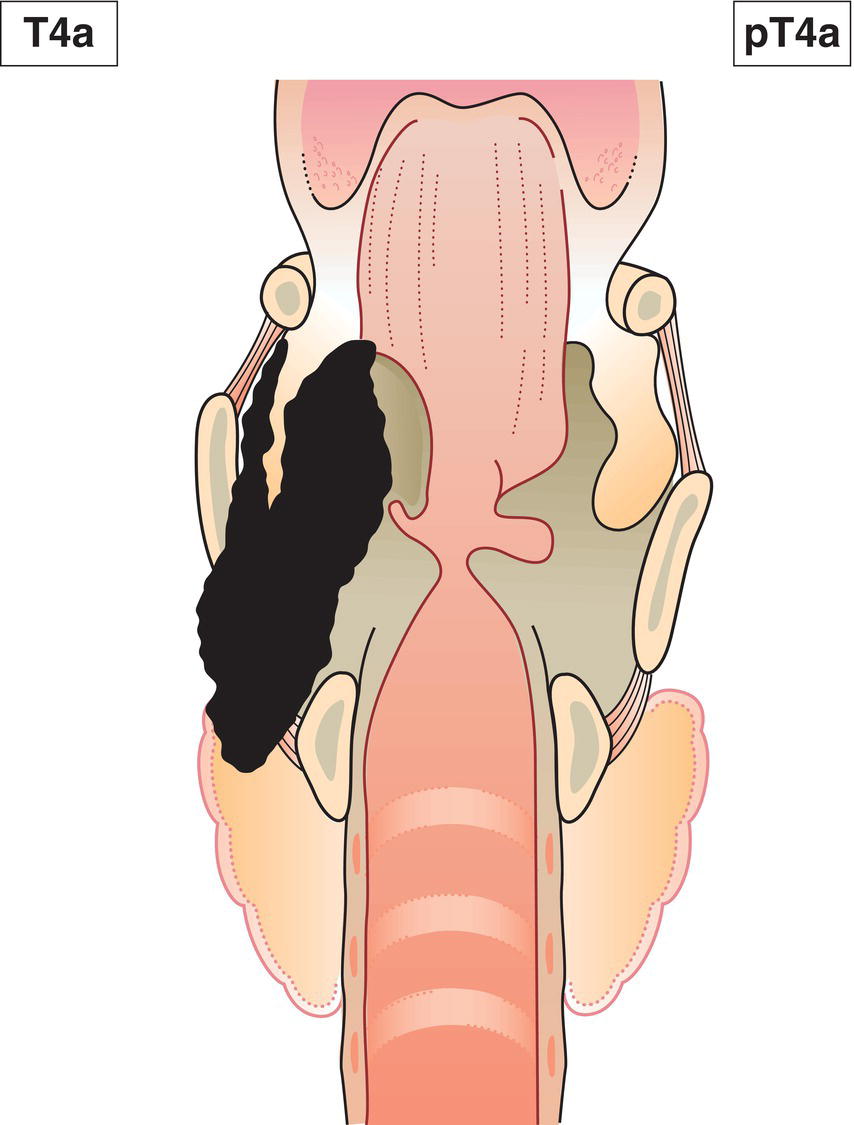
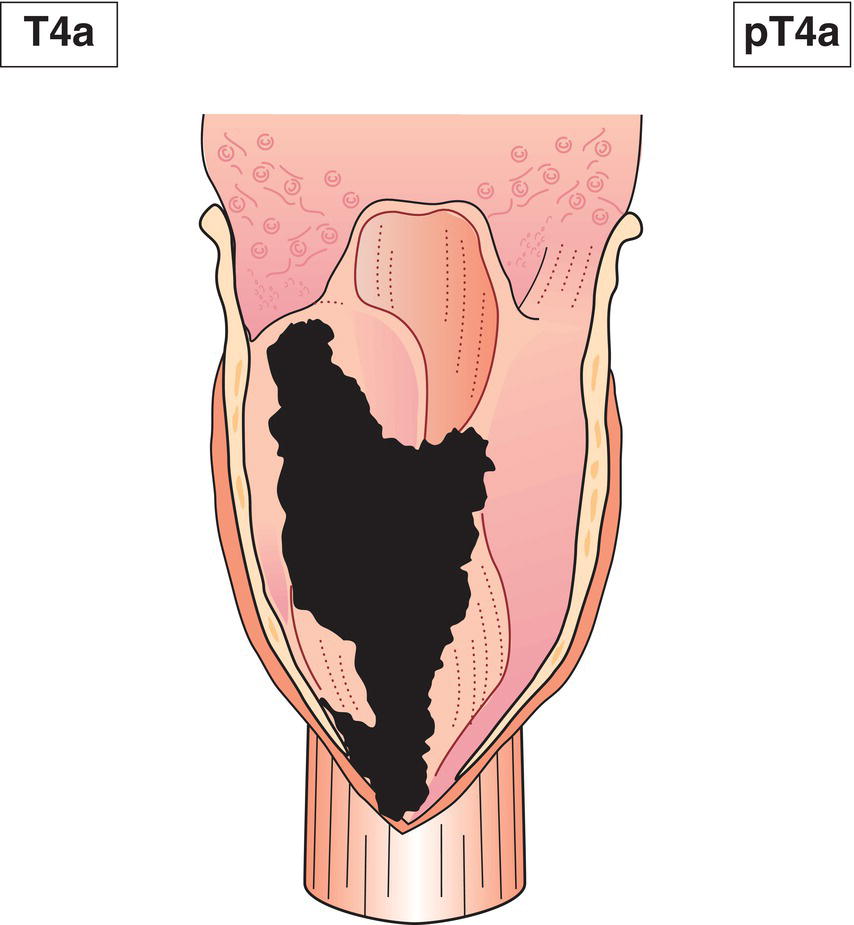
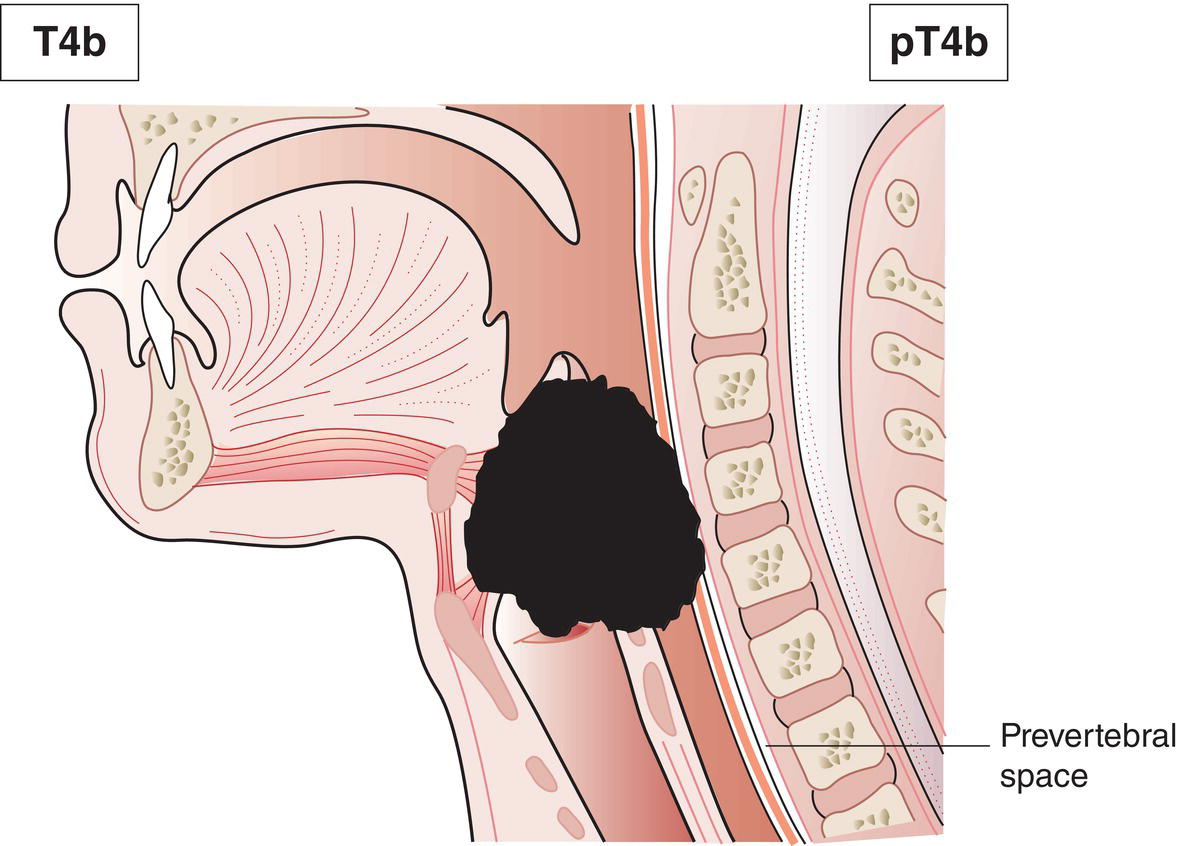
p16‐Negative Oro‐ and Hypopharynx
N – Regional Lymph Nodes
p16‐Positive Oropharynx
NX
Regional lymph nodes cannot be assessed
N0
No regional lymph node metastasis
N1
Unilateral metastasis, in lymph node(s), all 6 cm or less in greatest dimension (Fig. 69)
N2
Contralateral or bilateral metastasis in lymph node(s), all 6 cm or less in greatest dimension (Fig. 70)
N3
Metastasis in lymph node(s) greater than 6 cm in dimension (Fig. 71) 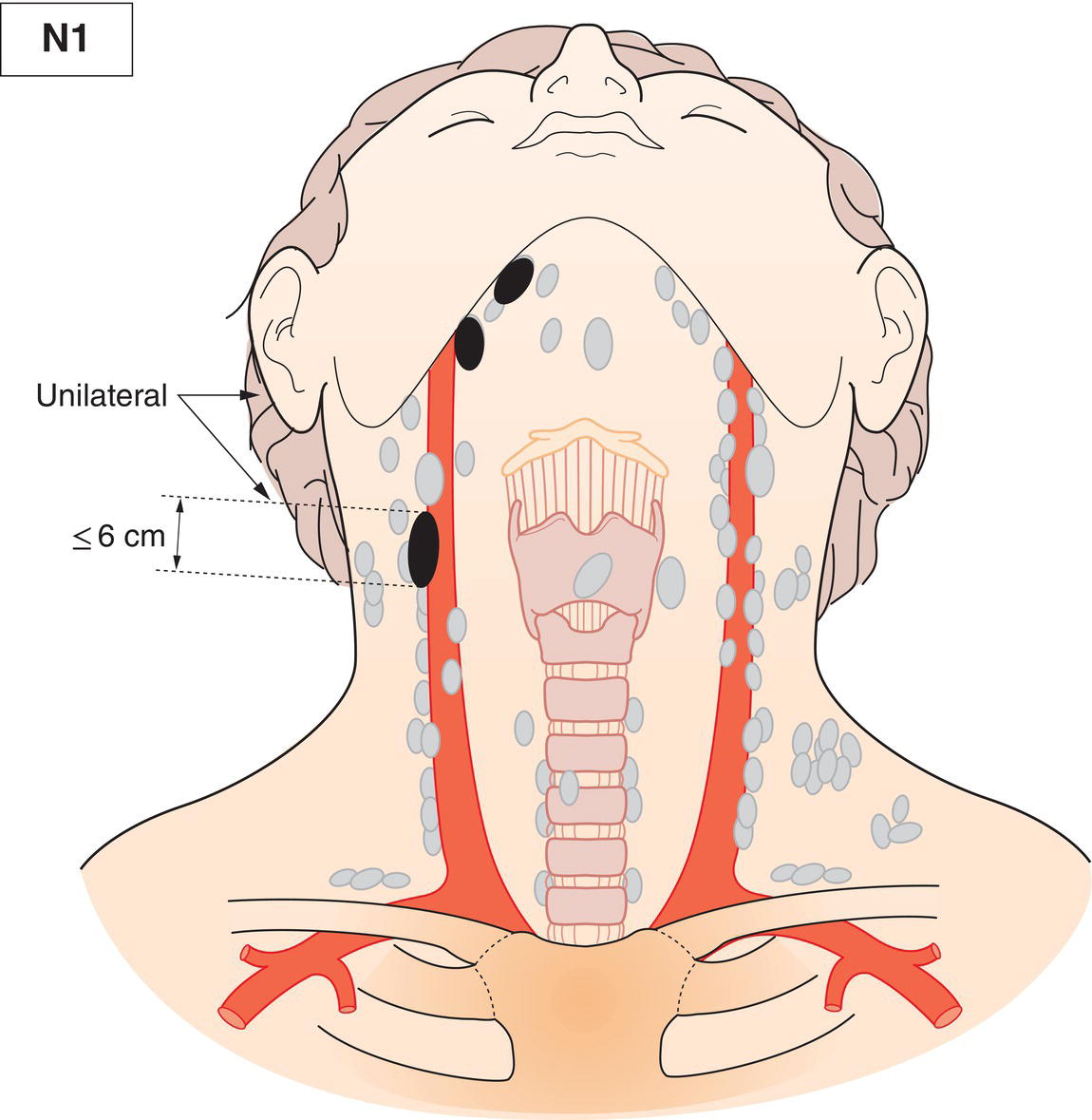
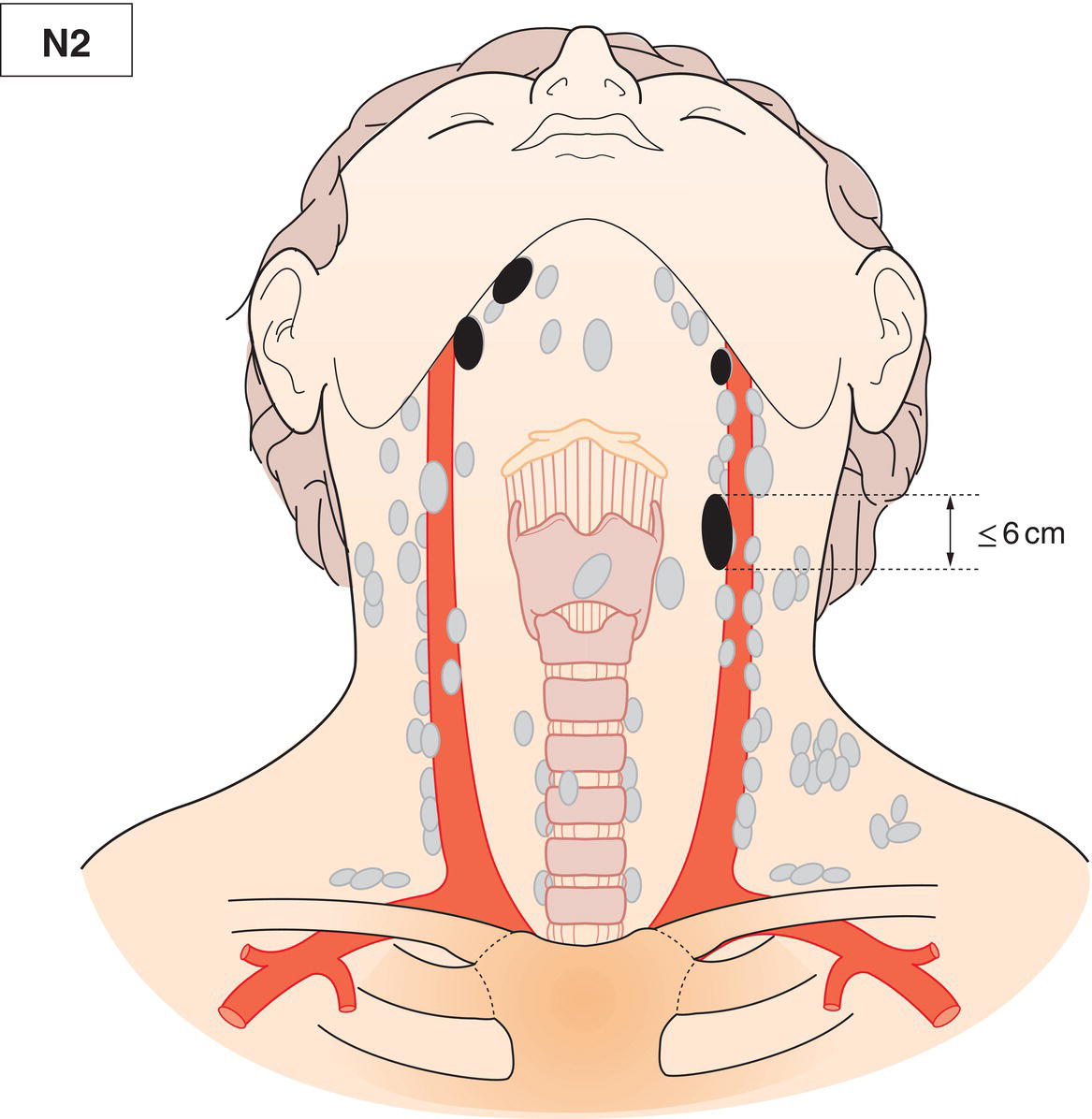
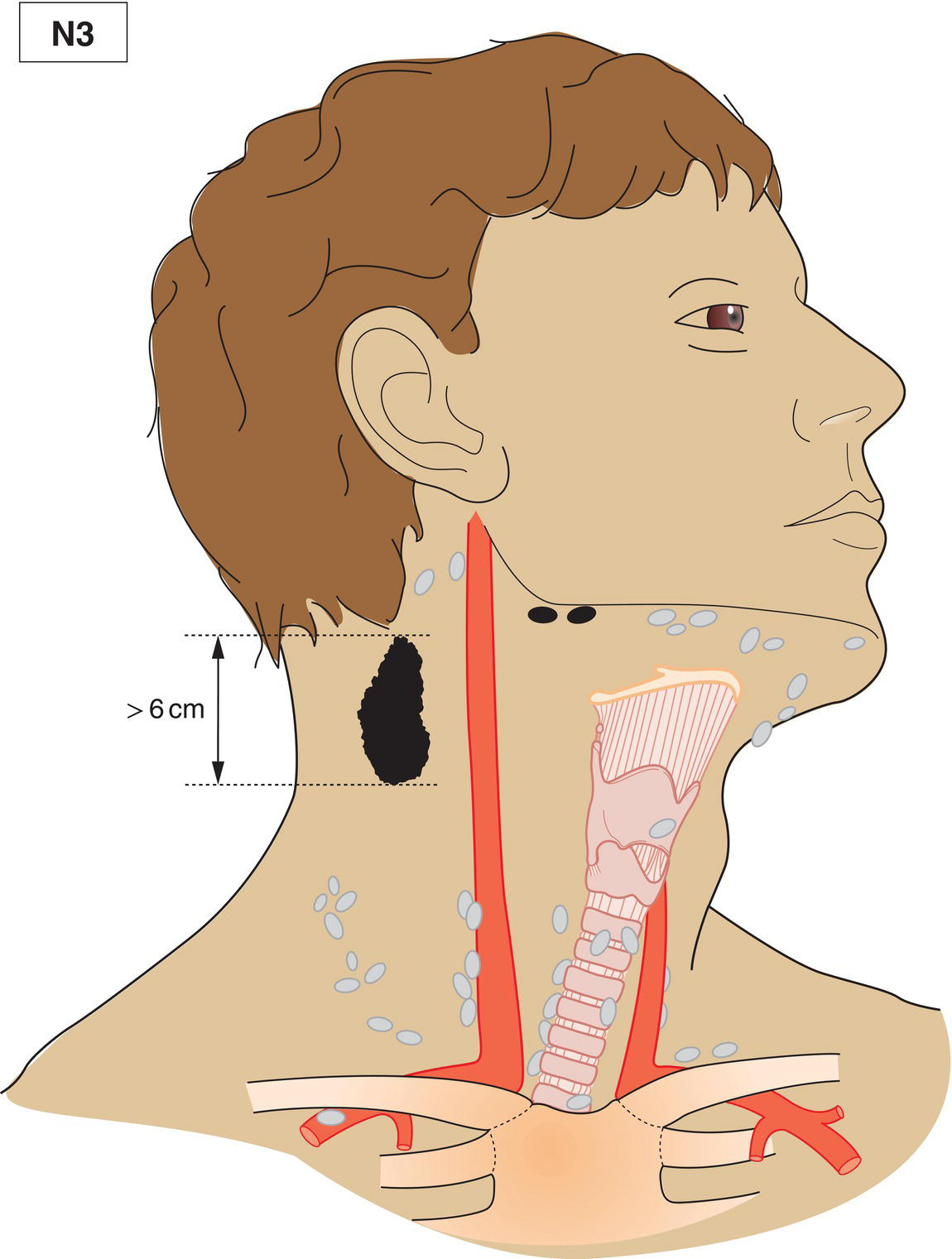
pNX
Regional lymph nodes cannot be assessed
pN0
No regional lymph node metastasis
pN1
Metastasis in 1 to 4 lymph node(s) (Fig. 72)
pN2
Metastasis in 5 or more lymph nodes (Fig. 73) 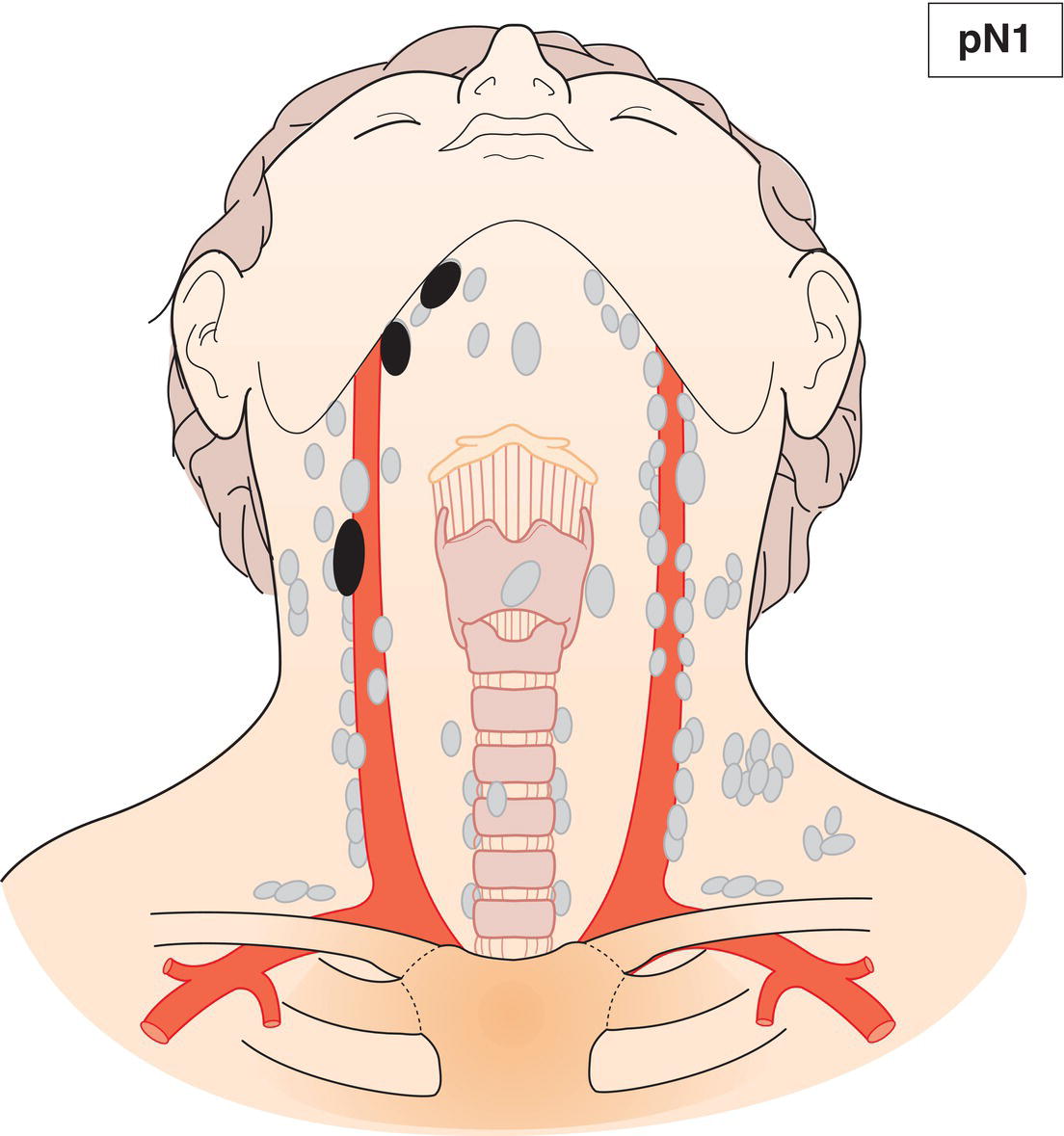
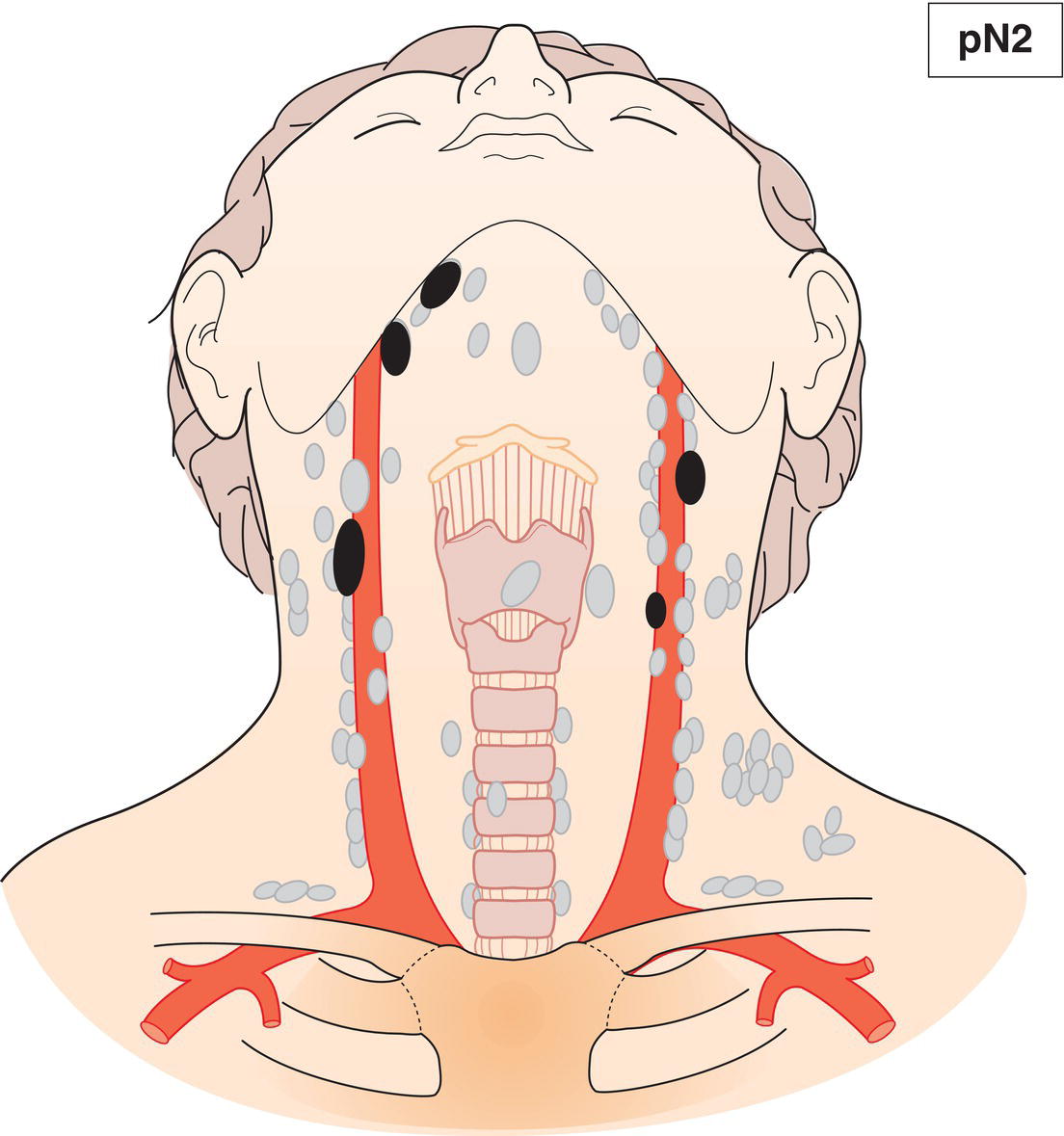
Nasopharynx
N – Regional Lymph Nodes
NX
Regional lymph nodes cannot be assessed
N0
No regional lymph node metastasis
N1
Unilateral metastasis, in cervical lymph node(s), and/or unilateral or bilateral metastasis in retropharyngeal lymph nodes, 6 cm or less in greatest dimension, above the caudal border of cricoid cartilage (Fig. 74)
N2
Bilateral metastasis in cervical lymph node(s), 6 cm or less in greatest dimension, above the caudal border of cricoid cartilage (Fig. 75, 76)
N3
Metastasis in cervical lymph node(s) greater than 6 cm in dimension and/or extension below the caudal border of cricoid cartilage (Fig. 76, 77)
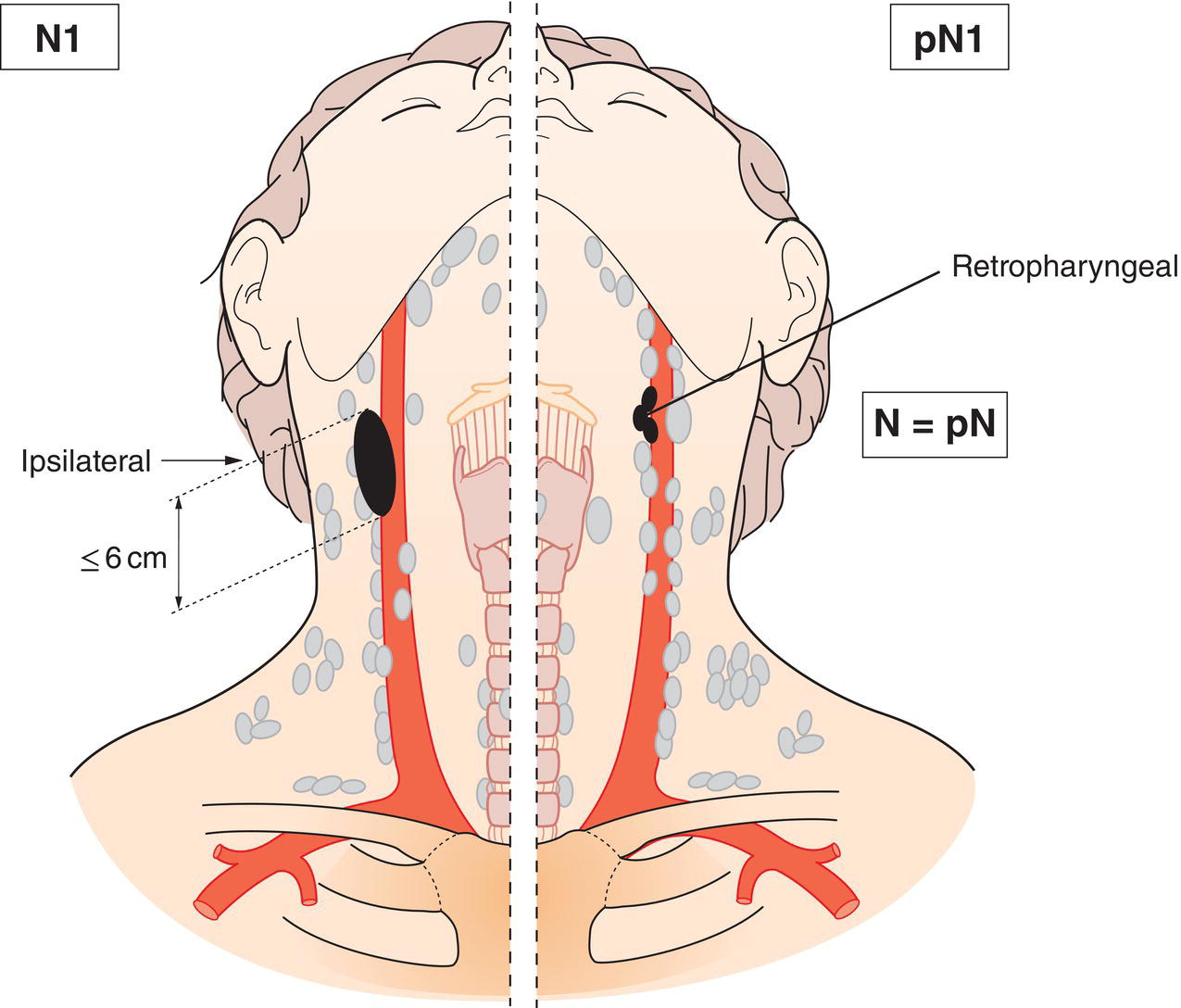
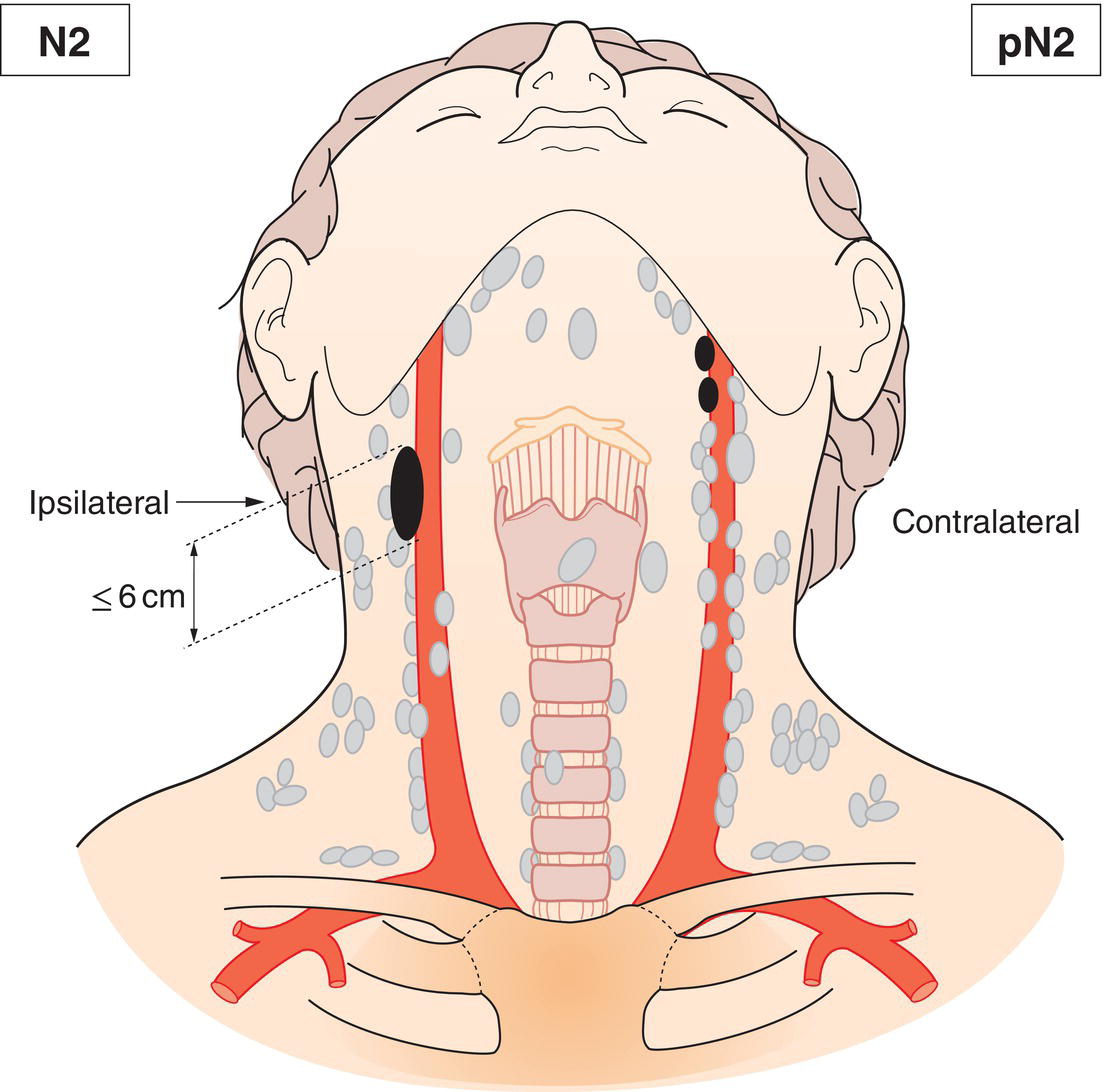
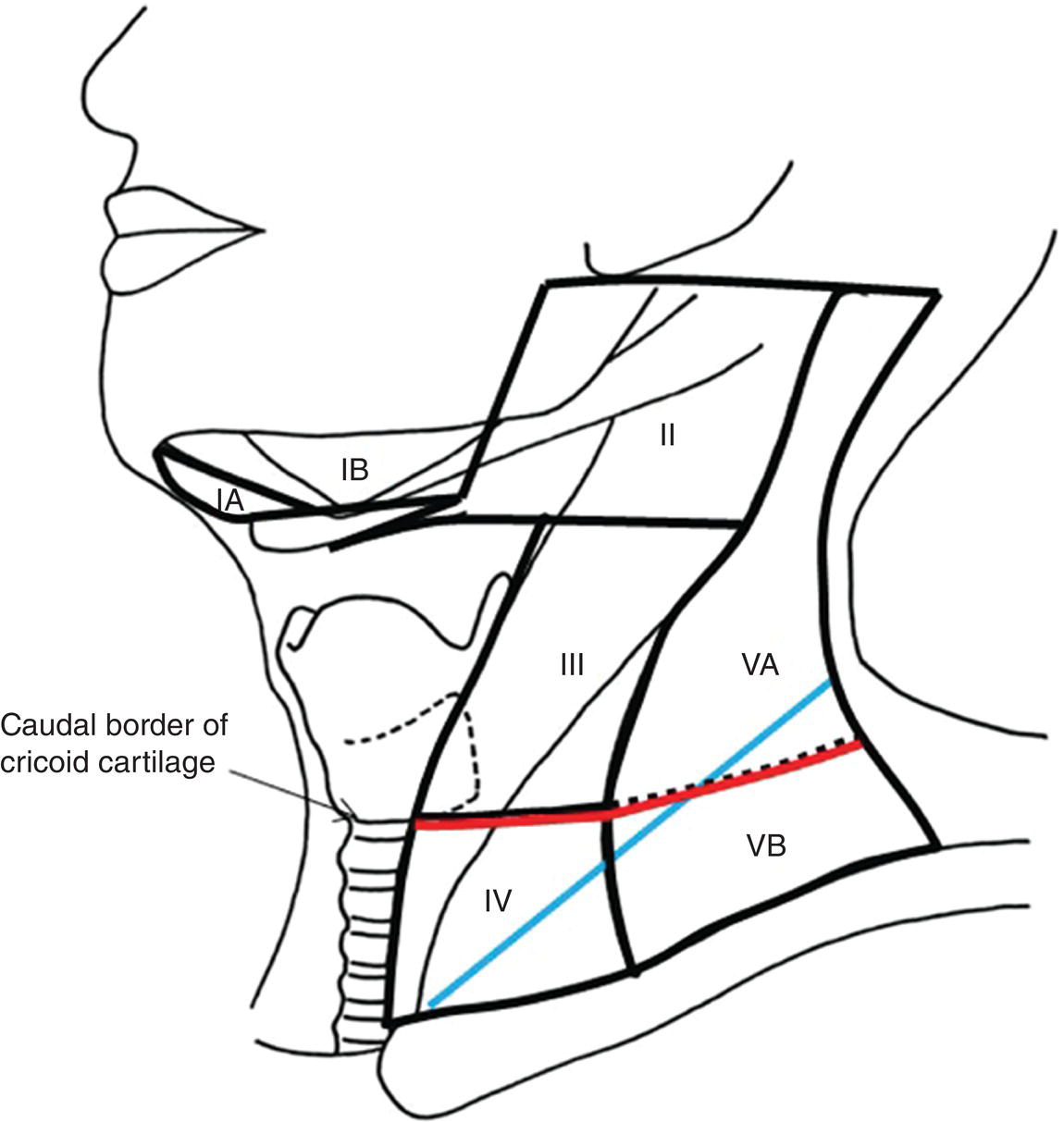

pTN Pathological Classification
Summary
Stay updated, free articles. Join our Telegram channel

Full access? Get Clinical Tree



